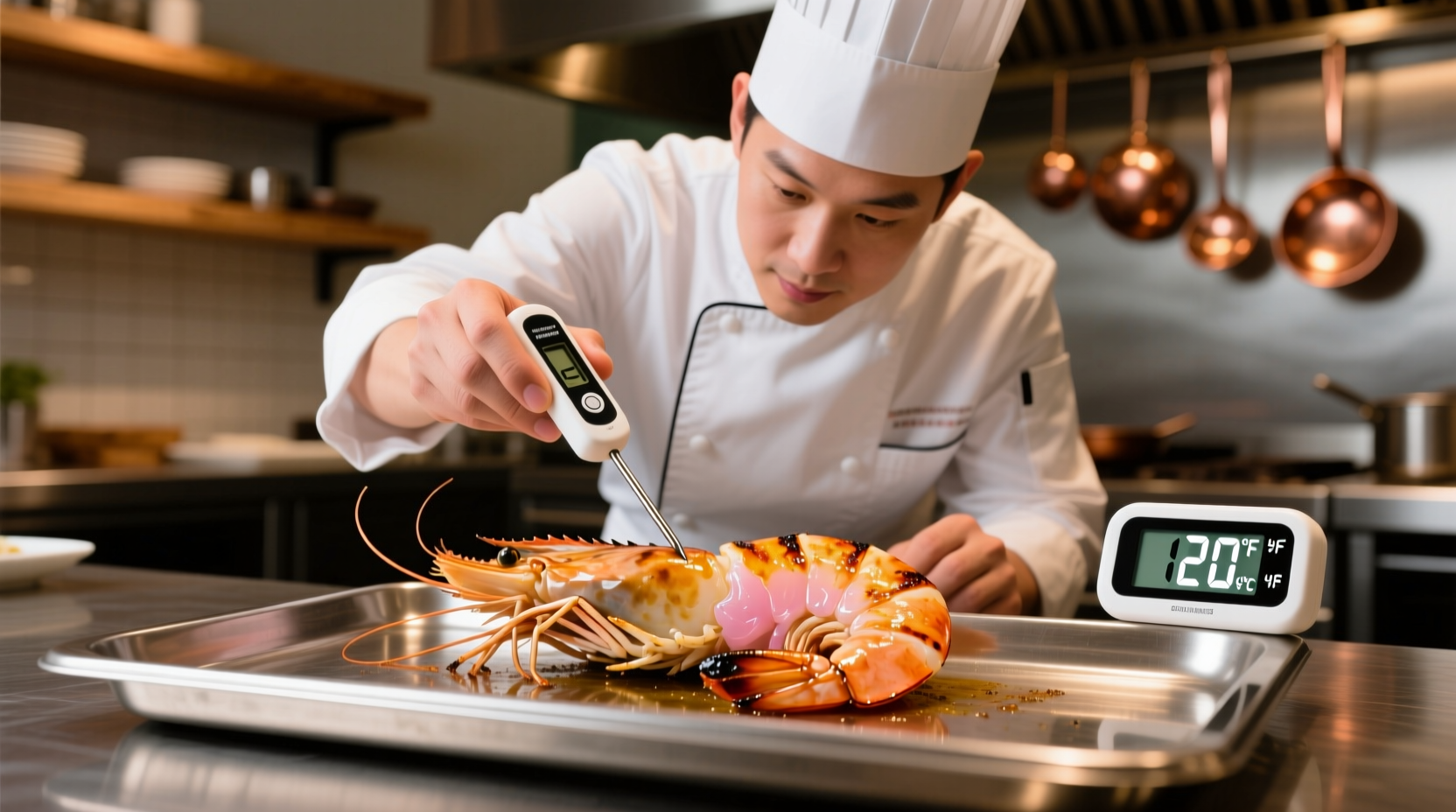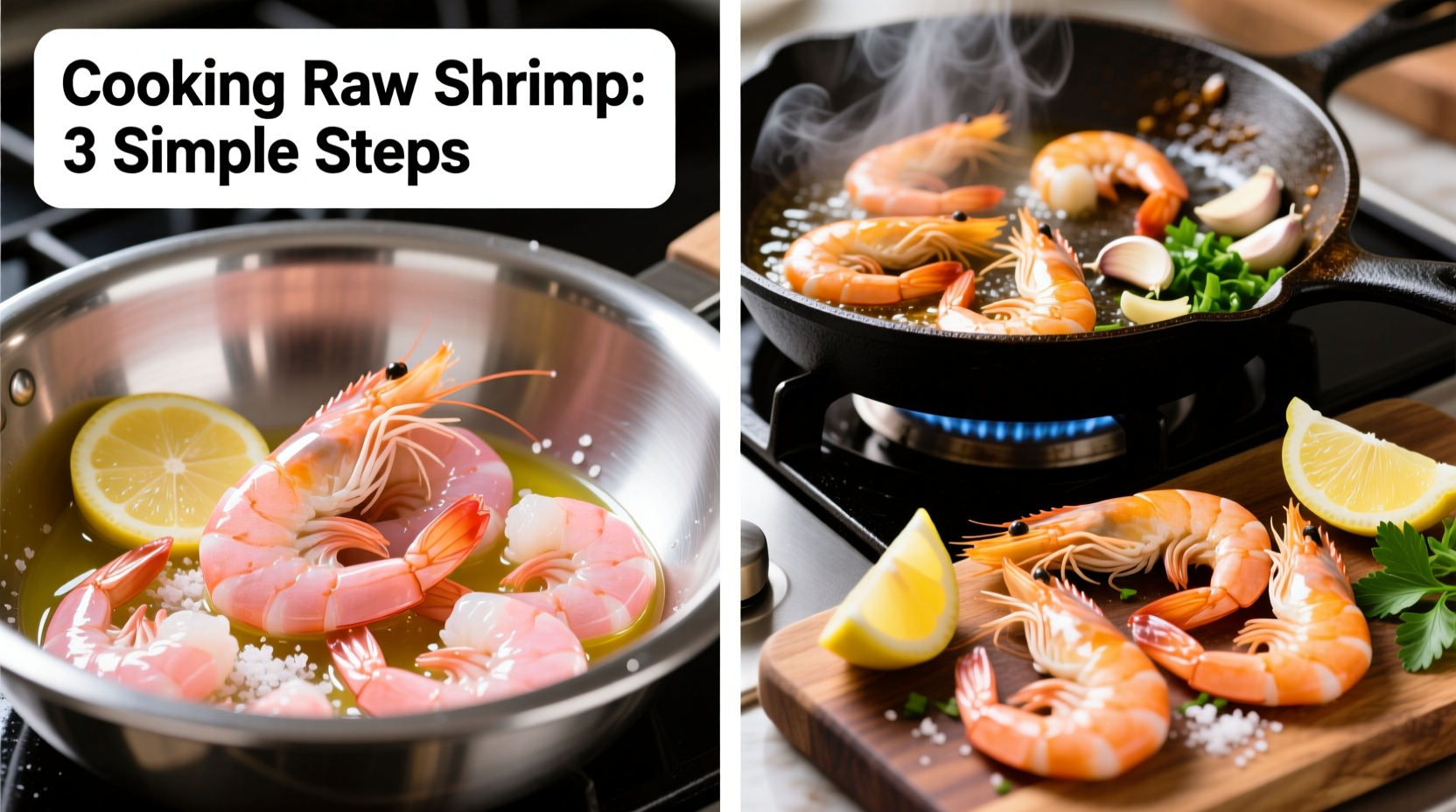Shrimp transforms from translucent to tender perfection in mere minutes, yet improper cooking ruins this delicate seafood more often than any other protein. As a chef who's trained line cooks in Michelin-starred kitchens, I've seen countless home cooks struggle with raw shrimp because they lack precise timing guidance and visual indicators. This guide delivers professional techniques you can implement immediately, whether you're boiling, sautéing, grilling, or baking.
Essential Preparation Before Cooking
Start with quality raw shrimp - look for firm, translucent flesh without ammonia odors. If frozen, thaw overnight in the refrigerator rather than at room temperature to prevent bacterial growth. The USDA Food Safety and Inspection Service confirms this method maintains safety while preserving texture (USDA Guidelines).
Peel and devein shrimp by making a shallow cut along the back with a paring knife, then rinse under cold water. Crucially, pat shrimp completely dry with paper towels - moisture creates steam instead of sear. For best results, chill peeled shrimp for 15 minutes before cooking to firm the flesh.
| Shrimp Size | Count per Pound | Boiling Time | Saute Time | Grill Time |
|---|---|---|---|---|
| Extra Jumbo | 16-20 | 3-4 min | 2.5-3 min/side | 3-4 min/side |
| Jumbo | 21-25 | 2.5-3 min | 2-2.5 min/side | 2.5-3 min/side |
| Large | 31-35 | 2-2.5 min | 1.5-2 min/side | 2-2.5 min/side |
| Medium | 41-50 | 1.5-2 min | 1-1.5 min/side | 1.5-2 min/side |
Mastering Four Cooking Methods
Boiling for Perfect Texture
Bring 4 quarts of water with 1/4 cup salt to rolling boil. Add shrimp and cook just until opaque (refer to timing chart). Immediately transfer to ice bath to stop cooking. This technique works best for shrimp cocktail or salads where uniform cooking matters most. Never boil shrimp in lemon juice - the acid 'cooks' the exterior while interior remains raw.
Sauteing for Restaurant-Quality Results
Heat 1 tablespoon oil in skillet over medium-high until shimmering. Add shrimp in single layer without crowding. Cook 2-3 minutes per side until golden with pink-orange color. The critical moment comes when edges turn opaque - flip immediately. Overcrowding lowers pan temperature, causing shrimp to steam instead of sear. For garlic butter shrimp, add aromatics after removing shrimp to prevent burning.
Grilling for Smoky Flavor
Preheat grill to 400°F (204°C). Thread shrimp on skewers (soak wooden skewers first) or use a grill basket. Brush with oil to prevent sticking. Grill 2-3 minutes per side until grill marks appear and shrimp curl into 'C' shape. Avoid 'S' shaped curls - this indicates overcooking. Larger shrimp work best for grilling as they're less likely to fall through grates.
Baking for Hands-Off Cooking
Preheat oven to 400°F (204°C). Arrange shrimp on parchment-lined baking sheet. Drizzle with oil and season. Bake 6-8 minutes until opaque. This method suits busy cooks needing minimal attention, but requires precise timing as oven heat continues cooking shrimp after removal.
Doneness Indicators You Can Trust
Visual cues matter more than timers. Properly cooked shrimp turns from grayish-translucent to opaque pink with white flesh. The muscle contracts into a loose 'C' shape - a tight 'O' means overcooked. For absolute certainty, insert instant-read thermometer into thickest part: 145°F (63°C) is the USDA-recommended safe internal temperature for seafood.
Texture provides final confirmation - cooked shrimp should feel firm yet slightly springy. Overcooked shrimp becomes tough and rubbery with diminished flavor. If unsure, remove one shrimp early as test piece before continuing with the batch.

Avoiding Common Safety Mistakes
Raw shrimp carries bacteria like Vibrio that require proper cooking to eliminate. Never reuse plates or utensils that contacted raw shrimp without thorough washing. The FDA advises against washing raw shrimp before cooking as this spreads bacteria through splashing (FDA Seafood Guidelines).
Refrigerate cooked shrimp within two hours (one hour in hot conditions). Leftovers keep 3-4 days in airtight containers. Never refreeze thawed shrimp - quality deteriorates significantly.
Flavor Enhancement Techniques
Season shrimp just before cooking - salt draws out moisture when applied too early. For grilled or sautéed shrimp, add aromatics like garlic and herbs during the last 30 seconds to prevent burning. Acidic ingredients (lemon, vinegar) should be added after cooking to maintain texture.
Marinades work best with brief 15-30 minute applications - longer exposure to acids 'cooks' the exterior. For best results, pat shrimp dry after marinating to ensure proper searing.
Troubleshooting Cooking Issues
Rubbery texture? You've overcooked by 30 seconds or more. Shrimp continues cooking off-heat, so remove just before reaching ideal doneness.
Uneven cooking? Size inconsistency is the culprit. Sort shrimp by size before cooking or adjust timing for larger pieces.
Sticking to pan? Your skillet wasn't hot enough before adding shrimp. Properly preheated oil creates a protective barrier.











 浙公网安备
33010002000092号
浙公网安备
33010002000092号 浙B2-20120091-4
浙B2-20120091-4